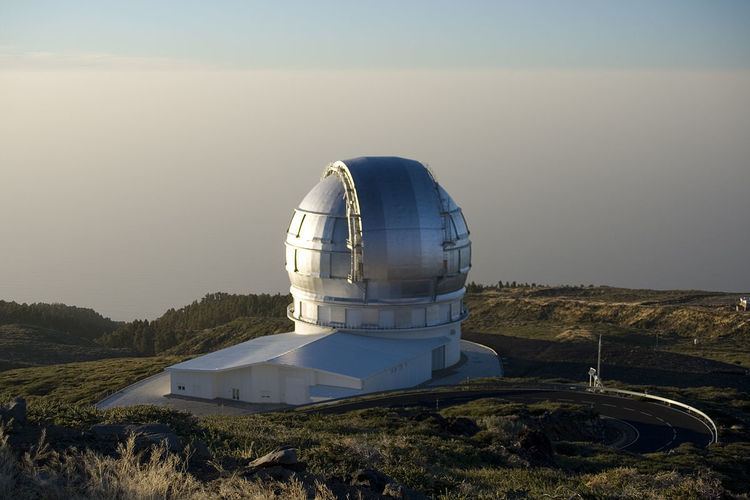 | ||
This list of the largest optical reflecting telescopes with objective diameters of 3.0 metres (120 in) or greater is sorted by aperture, which is one limit on the light-gathering power and resolution of a reflecting telescope's optical assembly. The mirrors themselves can be larger than the aperture, and telescopes may use aperture synthesis achieved by interferometry. Telescopes designed to be used as optical astronomical interferometers such as the Keck I and II used together as the Keck Interferometer (up to 85 m) can reach very high resolutions, although at a narrower range of observations. When the two mirrors are on one mount, the combined mirror spacing of the Large Binocular Telescope (22.8 m) allows fuller use of the aperture synthesis.
Contents
- Table of reflecting telescopes
- Top telescopes of 2010
- Top telescopes of 2000
- Chronologically
- Future telescopes
- Under construction or planned construction
- Proposed
- References
Largest does not always equate to being the best telescopes, and overall light gathering power of the optical system can be a poor measure of a telescope's performance. Space-based telescopes, such as the Hubble Space Telescope, take advantage of being above the Earth's atmosphere to reach higher resolution and greater light gathering through longer exposure time. Location in the northern or southern hemisphere of the Earth can also limit what part of the sky can be observed.
Table of reflecting telescopes
This list is ordered by optical aperture, which has historically been a useful gauge of limiting resolution, optical area, physical size, and cost. Multiple mirror telescopes that are on the same mount, may have a working beam combiner, and can form an image may be ranked by an equivalent aperture to this reported by sources. HET-style or fixed telescopes are ranked by an equivalent aperture also.
There are only a few sites capable of polishing the mirrors for these telescopes. SAGEM in France polished the four VLT mirrors, the two Gemini mirrors, and the 36 segments for GTC. The Steward Observatory Mirror Lab cast and polished the two LBT mirrors, the two Magellan mirrors and the MMT replacement mirror. It is currently making the LSST primary mirror and the mirrors for the Giant Magellan Telescope. The Keck segments were made by Schott AG. The SALT and LAMOST segments were cast and polished by LZOS. The mirror for Subaru was cast by Corning and polished at Contraves Brashear Systems in Pennsylvania.
This table does not include all the largest mirrors manufactured. The Steward Observatory Mirror Lab produced the 6.5-metre f/1.25 collimator used in the Large Optical Test and Integration Site of Lockheed Martin, used for vacuum optical testing of other telescopes.
Segmented mirrors are also referred to as mosaic mirrors. Single mirrors are also referred to monolithic mirrors, and can be sub-categorized in types, such as solid or honeycomb.
Top telescopes of 2010
The largest telescopes are multi-telescope interferometers, and may have longer baselines. However, these astronomical interferometers are less flexible in use, and many interferometers cannot form images or see faint objects despite their high peak angular resolution.
The largest telescope during the first decade of the 21st century could be either the Gran Telescopio Canarias (one 10.4 m diameter mirror), the Large Binocular Telescope (two 8.4 m diameter mirrors on a binocular mount), or the Very Large Telescope (with four 8.2 m telescopes and four 1.8 m auxiliary telescopes). However, as these were still coming online in the period, the two 10 m Keck Telescopes (with 85 m aperture synthesis) were possibly the largest in full scientific operation.
Note other wavelengths of telescopes can be much larger physically, such as the 305 m aperture Arecibo radio telescope, but since radio wavelengths are also larger, this does not necessarily translate into brighter or higher resolution images.
Largest telescopes with interferometer mode, and two image-forming interferometer arrays.
*Baseline does not reduce with viewing angle
Top telescopes of 2000
Under constructionChronologically
For earlier top telescopes see List of largest optical telescopes historically
Future telescopes
Below are selected telescopes that are still in the conceptual/proposed stage or still under construction.
